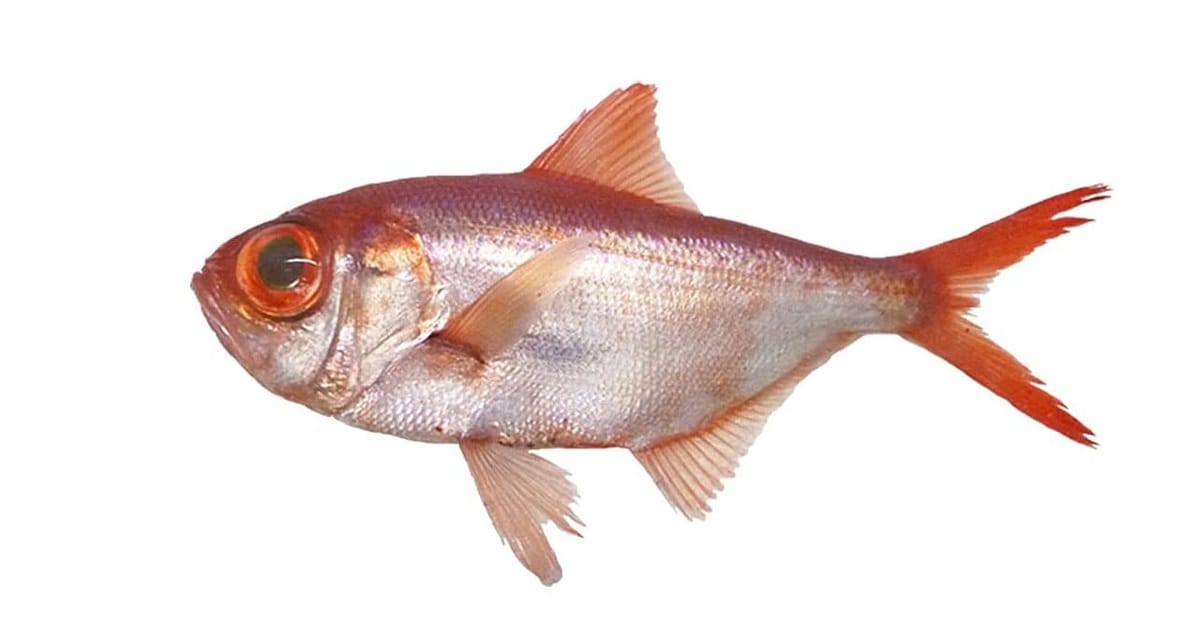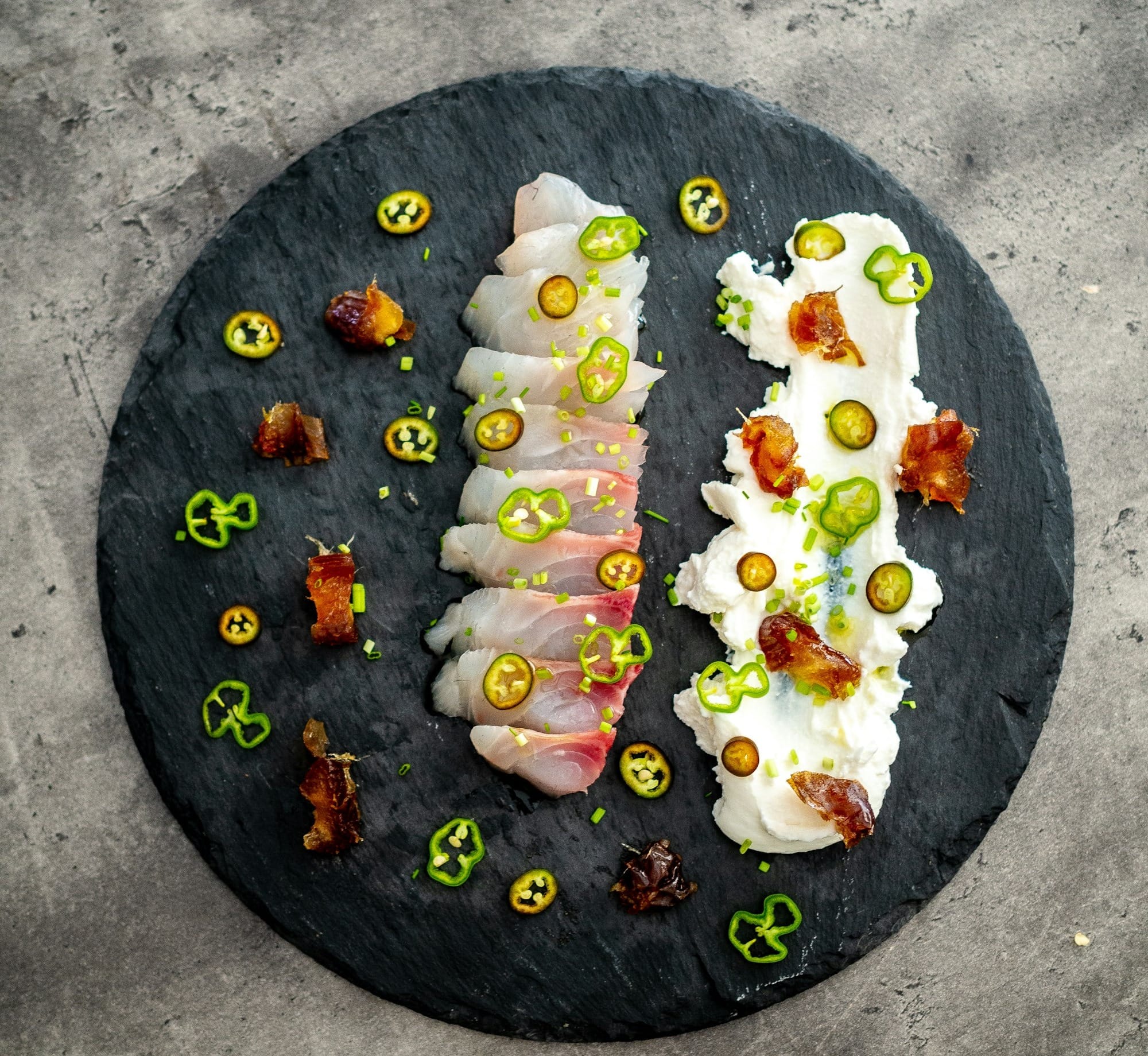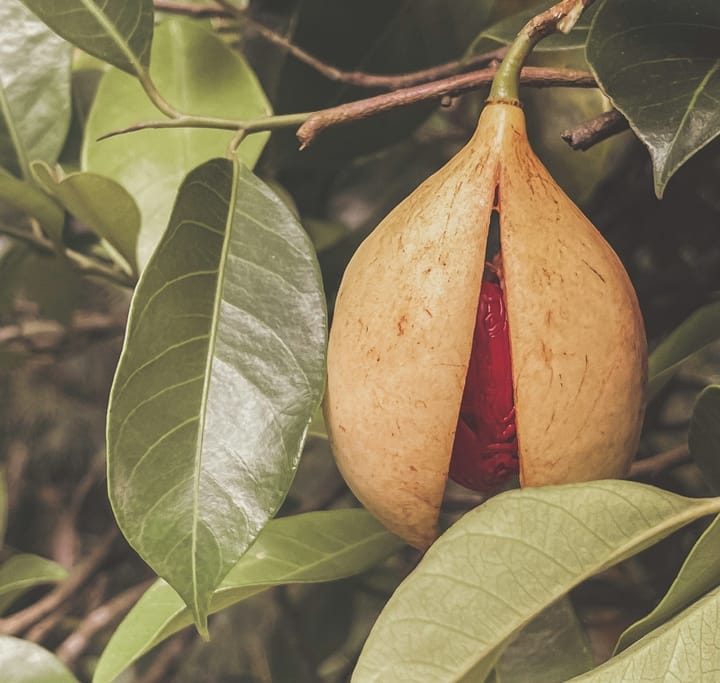Kinmedai: The Golden Eye Snapper That Commands Premium Prices
Discover kinmedai, Japan's prized golden eye snapper. Learn why this deep-sea delicacy commands premium prices, traditional preparation methods, and what makes it a luxury ingredient

Deep beneath the Pacific Ocean's azure surface, where sunlight never penetrates, swims one of Japan's most coveted culinary treasures.
The kinmedai, scientifically known as Beryx splendens, is a fish that commands respect among sushi masters, premium restaurants, and discerning food enthusiasts worldwide.
With its stunning crimson scales and luminous golden eyes, this deep-sea dweller has earned its place among the world's most expensive seafood ingredients.
A Fish Born from the Depths
The kinmedai, literally translating to "golden eye sea bream," inhabits the mysterious depths of the ocean between 400 and 600 meters below the surface.
Despite its common name, this extraordinary fish isn't actually a bream at all, but rather belongs to the Berycidae family of deep-sea fish.
Its most distinctive features – those large, reflective golden eyes and brilliant red coloration – are evolutionary adaptations that have allowed it to thrive in the perpetual darkness of the deep ocean.
The fish's oversized eyes aren't just for show; they're sophisticated light-gathering instruments that help it detect the faintest glimmers of bioluminescence from prey in the abyss.
The bright red coloration serves as perfect camouflage in deep waters, where red wavelengths of light cannot penetrate, making the fish virtually invisible to predators lurking in the darkness.
Measuring typically 40 centimeters in length but capable of reaching up to 70 centimeters, kinmedai possesses a compressed, oval-shaped body that's perfectly adapted for deep-water living.
Its relatively small mouth and streamlined form allow it to navigate efficiently through its high-pressure environment while hunting for crustaceans and smaller fish.
The Taste That Captivates
What makes kinmedai truly exceptional isn't just its appearance – it's the luxurious eating experience it provides.
This white-fleshed fish (categorized as shiromi in Japanese cuisine) offers a unique combination of delicate sweetness and rich umami that sets it apart from other premium seafood.
The flesh is remarkably fatty for a white fish, with a silky, almost buttery texture that melts on the tongue.
Unlike many deep-sea species that can taste muddy or overly fishy, kinmedai possesses a clean, refined flavor profile with subtle sweetness and pronounced umami characteristics.
The high fat content, particularly during the peak season from late fall through early spring, creates an indulgent mouthfeel that food enthusiasts describe as both satisfying and elegant.
What's particularly remarkable about kinmedai is its versatility. The tender flesh works beautifully raw as sashimi, where its natural flavors can shine, but it also responds exceptionally well to various cooking methods.
Whether grilled, steamed, braised, or prepared in traditional Japanese simmered dishes, the fish maintains its delicate texture while developing deeper, more complex flavors.
The Preparation
The journey from deep-sea catch to premium dining table involves meticulous attention to detail that exemplifies Japanese culinary craftsmanship.
The process begins with the ikejime technique, a traditional method that has been perfected over centuries to ensure the highest quality fish.
Ikejime, which literally means "closing the fish," involves a precise two-step process that instantly kills the fish while preserving its quality.
First, a spike is quickly inserted into the hindbrain, causing immediate death.
Then, a thin needle is threaded through the spinal column to destroy the spinal cord, preventing any muscle contractions that would consume the fish's ATP stores and create unwanted lactic acid.
This technique, which originated in Edo (modern-day Tokyo) some 200 years ago, is crucial for kinmedai's subsequent aging process.
After ikejime, the fish undergoes a carefully controlled aging period of 2-3 days in traditional Edomae sushi restaurants. During this time, the fish's natural enzymes break down proteins in the flesh, intensifying both flavor and improving texture.
The fish aging process requires expert knowledge and precise environmental control. The fish is meticulously cleaned with all blood removed, then stored in vacuum-sealed conditions in refrigeration.
Paper towels are inserted into body cavities to absorb moisture, and the entire fish is stored intact to prevent any flesh exposure that could lead to spoilage.
Regional Excellence: The Geography of Flavor
Not all kinmedai are created equal, and geography plays a crucial role in determining quality and price.
The most prized specimens come from specific fishing grounds off Japan's coast, particularly around the Izu Peninsula in Shizuoka Prefecture and the waters near Choshi in Chiba Prefecture.
The highest grade kinmedai, known as "ji-kinmedai" (local kinmedai), are caught by day boats using traditional pole-and-line fishing methods in designated waters.
These fish command premium prices because they can be landed and processed on the same day they're caught, ensuring maximum freshness.
The famous "Inatori Kinmedai" from Higashiizu Town has even earned regional trademark protection and certification under Shizuoka's Food Selection program.
The seasonal timing of the catch dramatically affects both quality and price.
Late spring and early summer catches, just before the fish spawn, are considered the fattiest and most flavorful.
During this period, kinmedai accumulates maximum fat reserves, creating the luxurious texture and rich taste that connoisseurs prize most highly.
Culinary Applications: Traditional and Modern
In traditional Japanese cuisine, kinmedai shines in preparations that highlight its natural characteristics. The classic kinmedai no nitsuke (simmered kinmedai) showcases the fish's ability to absorb flavors while maintaining its delicate texture.
This dish, recognized by Japan's Ministry of Agriculture as a traditional local cuisine, involves slowly braising the fish in a sweet soy-based sauce that penetrates the flesh without overwhelming its natural sweetness.
Modern sushi restaurants have elevated kinmedai to new heights through innovative preparation techniques.

The kawashimo-zukuri method involves briefly blanching the skin with boiling water, then immediately chilling it, which tenderizes the skin while preserving the flesh's raw qualities.
Alternatively, many sushi chefs employ aburi techniques, lightly torching the skin to create textural contrast and release aromatic oils.
The fish's skin is particularly noteworthy – it's thin, edible, and contains concentrated flavors.
When properly prepared, the skin adds both textural interest and intensified taste to each bite.
This attention to utilizing every part of the fish reflects the Japanese principle of mottainai, avoiding waste while maximizing flavor.
Nutritional Excellence
Beyond its culinary merits, kinmedai offers impressive nutritional benefits. As a deep-sea fish, it's rich in omega-3 fatty acids DHA and EPA, which are typically associated with oily fish like salmon and mackerel.
These compounds provide cardiovascular benefits and may help prevent various health conditions.
The fish is also an excellent source of high-quality protein, vitamin B12 (essential for blood formation and nerve function), and phosphorus (crucial for bone and teeth health).
The red pigmentation comes from astaxanthin, a powerful antioxidant with anti-aging properties.
However, due to mercury concentrations typical of deep-sea fish, consumption guidelines recommend moderation, particularly for pregnant women.
A Living Tradition
What makes kinmedai truly special extends beyond its taste and preparation – it represents a living connection to centuries of Japanese culinary tradition.
The techniques used to catch, process, and prepare this fish have been refined over generations, creating a perfect harmony between traditional craftsmanship and natural excellence.
The fish's cultural significance in Japan goes beyond mere sustenance. Red-colored fish like kinmedai are considered symbols of celebration and good fortune, making them traditional choices for special occasions and ceremonial meals.
This cultural reverence, combined with the fish's exceptional eating qualities, has ensured its place among Japan's most treasured culinary ingredients.
Sustainability and Global Demand
As kinmedai gains recognition in fine dining establishments worldwide, its wild-caught nature presents both opportunities and challenges.
With no successful aquaculture operations, traditional fishing methods using small day boats and pole-and-line techniques remain essential – not only for quality but for ecosystem preservation.
For discerning food enthusiasts, finding suppliers who maintain these traditional handling methods is crucial to experiencing kinmedai's exceptional qualities.
Whether served as pristine sushi, classic simmered dishes, or innovative modern preparations, this remarkable fish delivers a luxury experience that validates its premium status among the world's finest ingredients.


